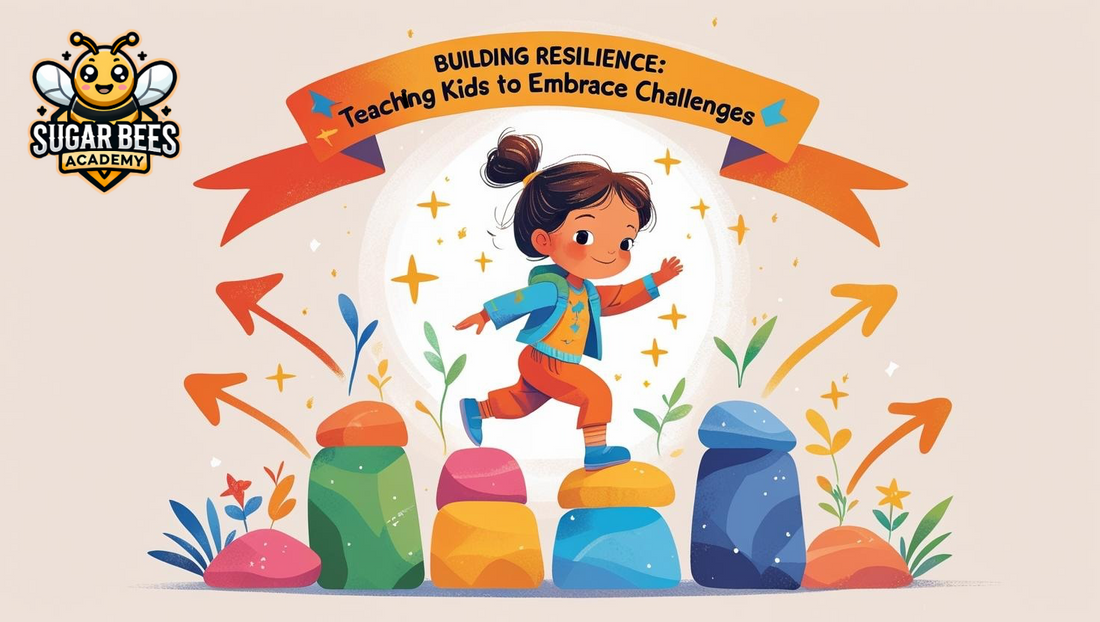
Building Resilience: Teaching Kids to Embrace Challenges
Share
Building Resilience: Teaching Kids to Embrace Challenges
In today’s rapidly changing world, the ability to adapt and persevere through adversity is more crucial than ever. Resilience—the capacity to recover from difficulties and face challenges head-on—is a vital skill that empowers children to navigate life’s ups and downs with confidence and determination. At Sugar Bees Academy, we prioritize cultivating resilience in our students, equipping them with the tools they need to thrive both academically and personally.
⸻
Understanding Resilience
Resilience is not an innate trait but a skill that can be developed over time. It involves:
• Emotional Regulation: Managing emotions effectively in the face of stress or adversity.
• Problem-Solving Skills: Approaching challenges with a solution-oriented mindset.
• Growth Mindset: Viewing failures as opportunities for growth and learning.
• Support Systems: Relying on a strong community of family, friends, and mentors for encouragement and guidance.
⸻
Strategies to Build Resilience in Children
1. Encourage a Growth Mindset
Teach children that abilities and intelligence can be developed through effort and perseverance. Emphasize the value of learning from mistakes and persisting through challenges.
Practical Tip: Celebrate efforts, not just outcomes. Praise statements like, “You worked really hard on that project,” reinforce the importance of dedication.
2. Promote Problem-Solving Skills
Equip children with strategies to tackle problems independently. Guide them to break down complex tasks into manageable steps and brainstorm possible solutions.
Practical Tip: When your child faces a dilemma, ask guiding questions like, “What are some ways you could approach this?” to foster critical thinking.
3. Model Resilient Behavior
Children learn by example. Demonstrate resilience in your own life by handling setbacks calmly and constructively.
Practical Tip: Share personal stories of overcoming obstacles, highlighting the lessons learned and the importance of perseverance.
4. Foster Strong Relationships
A supportive community provides a safety net for children during tough times. Encourage connections with peers, teachers, and family members who can offer guidance and support.
Practical Tip: Facilitate regular family meetings to discuss experiences, feelings, and strategies for handling challenges together.
5. Teach Emotional Awareness
Help children recognize and understand their emotions. Developing emotional intelligence enables them to manage feelings effectively and respond to stress in healthy ways.
Practical Tip: Use tools like emotion charts or journals to help children articulate their feelings and reflect on their emotional responses.
⸻
The Role of Sugar Bees Academy in Building Resilience
At Sugar Bees Academy, we integrate resilience-building into our curriculum through:
• Project-Based Learning: Engaging students in real-world problems that require critical thinking and adaptability.
• Mindfulness Practices: Incorporating activities that promote self-awareness and emotional regulation.
• Character Education: Emphasizing values like perseverance, empathy, and integrity to strengthen personal development.
• Mentorship Programs: Connecting students with mentors who provide guidance and model resilient behaviors.
⸻
Conclusion
Building resilience in children is a collaborative effort that involves consistent support, teaching, and modeling. By implementing these strategies, parents and educators can empower children to face challenges with confidence, adapt to changing circumstances, and grow into resilient, capable individuals. At Sugar Bees Academy, we are committed to nurturing these essential skills, preparing our students for a lifetime of success and well-being.



